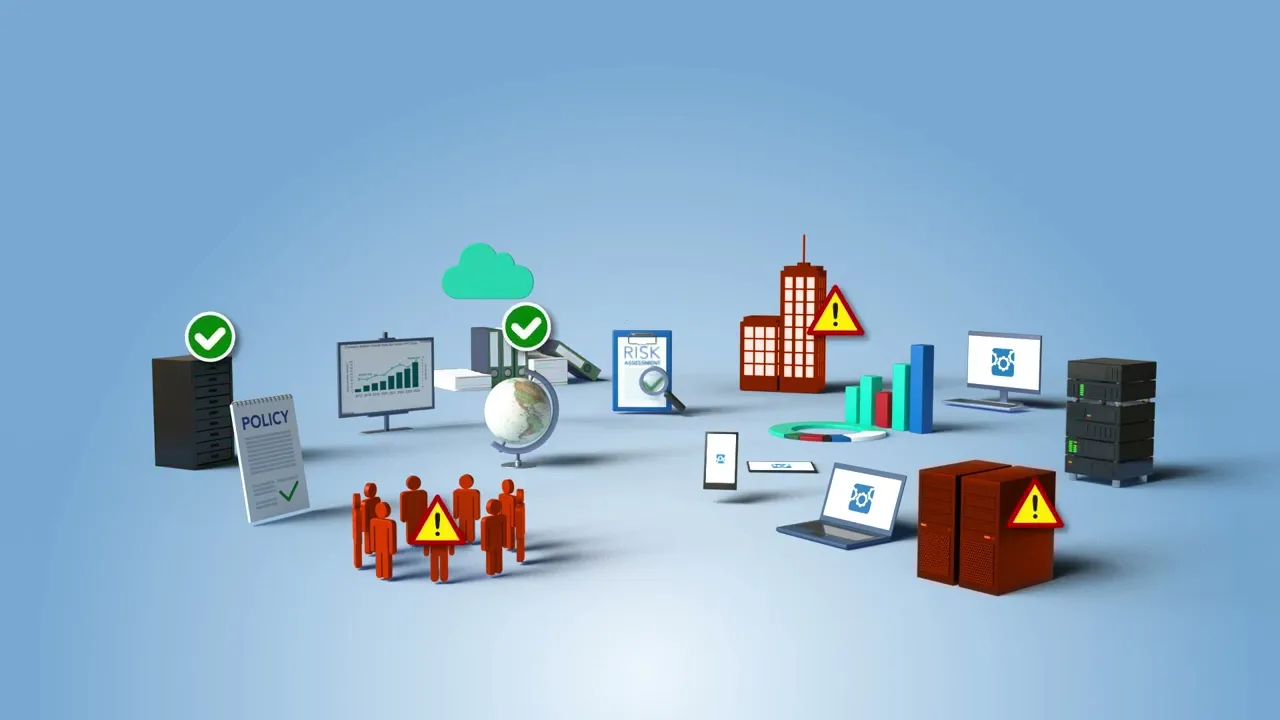Mitigate privacy risks to your customers and organization!
Table of Contents
TogglePrivacy risk can exist throughout the data life cycle, so it is important to manage and govern data properly. A number of privacy risk management activities can be undertaken during the data life cycle. Designing a privacy risk management framework is the first step to ensuring data validation and data protection, monitoring and controlling data, and complying with all applicable laws and regulations.
The Continuum GRC ITAM SaaS platform has privacy modules available, such as:

International Organization for Standardization (ISO/IEC) 27701
Continuum GRC created the number one ranked IRM GRC audit software solution for ISO/IEC 27701 audits that empowers you to prepare for an ISO/IEC 27701 audit effectively while dramatically reducing costs in preparation for working with a third-party assessment organization.
ISO/IEC 27701 specifies requirements and provides guidance for establishing, implementing, maintaining, and continually improving a Privacy Information Management System (PIMS) in the form of an extension to ISO/IEC 27001 and ISO/IEC 27002 for privacy management within the context of the organization. ISO/IEC 27701 specifies PIMS-related requirements and provides guidance for PII controllers and PII processors holding responsibility and accountability for PII processing. ISO/IEC 27701 is applicable to all types and sizes of organizations, including public and private companies, government entities, and not-for-profit organizations, which are PII controllers and/or PII processors processing PII within an ISMS.
Modules include:
- ISO/IEC 27701
What are you waiting for?
You are just a conversation away from putting the power of Continuum GRC to work for you.
Contact us using the form below or calling us at 1-888-896-6207 for immediate assistance.
To reduce spam submissions, we’ve implemented email verification for access to this form.
How it works:
- Enter your email address below.
- We'll send you a unique verification link.
- Click the link in the email to confirm your identity and gain access to the form.
This ensures only verified users can proceed, helping keep responses genuine and spam-free.
Thank you for your cooperation! If you don't receive the email, check your spam folder or request a new link. If you prefer to speak with a REAL HUMAN, please call our number listed at the top of this page.
About the Standard
ISO 27701 is an extension to ISO 27001 and ISO 27002, focusing on Privacy Information Management Systems (PIMS). It provides a framework for managing personal data and ensuring compliance with privacy regulations like GDPR, CCPA, and others. Below is a concise overview of the compliance requirements for ISO 27701, tailored for clarity and brevity:
Key Compliance Requirements for ISO 27701
- Establish a Privacy Information Management System (PIMS):
- Extend an existing ISO 27001 Information Security Management System (ISMS) to include privacy-specific controls.
- Define roles and responsibilities for data controllers and processors, ensuring clear accountability for personal data handling.
- Develop a PIMS policy that aligns with organizational objectives and privacy regulations.
- Risk Assessment and Management:
- Conduct a Privacy Impact Assessment (PIA) to identify risks to personal data.
- Assess risks related to data processing activities, including data breaches and non-compliance with privacy laws.
- Implement measures to mitigate identified risks, such as encryption or anonymization.
- Compliance with Privacy Laws and Regulations:
- Map PIMS processes to applicable privacy regulations (e.g., GDPR, CCPA, HIPAA).
- Ensure lawful basis for processing personal data (e.g., consent, legitimate interest).
- Maintain records of processing activities (RoPA) for both controllers and processors.
- Data Subject Rights:
- Establish processes to handle data subject requests, such as access, rectification, deletion, or data portability.
- Ensure timely responses to requests (e.g., within 30 days under GDPR).
- Provide clear communication to data subjects about their rights and how data is processed.
- Data Protection by Design and Default:
- Integrate privacy principles into system design, processes, and services.
- Implement technical and organizational measures, such as pseudonymization, to minimize data collection and use.
- Ensure only necessary personal data is processed for specific purposes.
- Third-Party and Vendor Management:
- Establish contracts with data processors that include privacy obligations.
- Conduct due diligence and audits to ensure third-party compliance with ISO 27701.
- Monitor and manage data sharing and cross-border data transfers.
- Security Controls for Personal Data:
- Apply ISO 27001/27002 security controls to protect personal data (e.g., access controls, encryption).
- Implement additional privacy-specific controls from ISO 27701 Annexes A (for controllers) and B (for processors).
- Examples include data minimization, transparency, and secure data disposal.
- Incident Management and Breach Notification:
- Develop processes to detect, report, and respond to personal data breaches.
- Notify relevant authorities and data subjects within regulatory timeframes (e.g., 72 hours for GDPR breaches).
- Maintain an incident response plan and document all breaches.
- Training and Awareness:
- Train employees on privacy policies, data protection practices, and ISO 27701 requirements.
- Foster a culture of privacy awareness across the organization.
- Monitoring, Auditing, and Continuous Improvement:
- Conduct regular internal audits to ensure PIMS compliance.
- Monitor compliance with privacy laws and ISO 27701 controls.
- Continuously improve the PIMS based on audit findings, risk assessments, and regulatory changes.
- Documentation and Record-Keeping:
- Maintain comprehensive records of data processing activities, risk assessments, and compliance measures.
- Document policies, procedures, and evidence of compliance for audits and certification.
- Certification (Optional):
- Engage an accredited certification body to audit the PIMS for ISO 27701 certification.
- Demonstrate compliance through a formal audit process, including a review of controls and documentation.
Key Clauses and Annexes
- Clauses 5-8: Extend ISO 27001 requirements to include privacy management, leadership, planning, and operation of the PIMS.
- Annex A (Controllers): 49 additional controls for data controllers, covering data subject rights, transparency, and lawful processing.
- Annex B (Processors): 37 controls for data processors, focusing on secure processing and contractual obligations.
- Annex C-F: Provide mappings to ISO 27001/27002, GDPR, and other privacy frameworks for alignment.
Practical Steps for Compliance
- Gap Analysis: Assess current practices against ISO 27701 requirements.
- Implement Controls: Address gaps with technical and organizational measures.
- Engage Stakeholders: Involve leadership, IT, legal, and compliance teams.
- Regular Reviews: Update the PIMS to reflect changes in regulations or operations.
- Seek Expertise: Consult privacy professionals or certification bodies for guidance.
Who Needs to Comply?
- Organizations acting as data controllers or processors handling personal data.
- Businesses seeking to demonstrate compliance with global privacy regulations.
- Companies already certified under ISO 27001 are looking to extend their ISMS to privacy.
For detailed pricing or further information on certification, visit the official ISO website or consult an accredited certification body.

